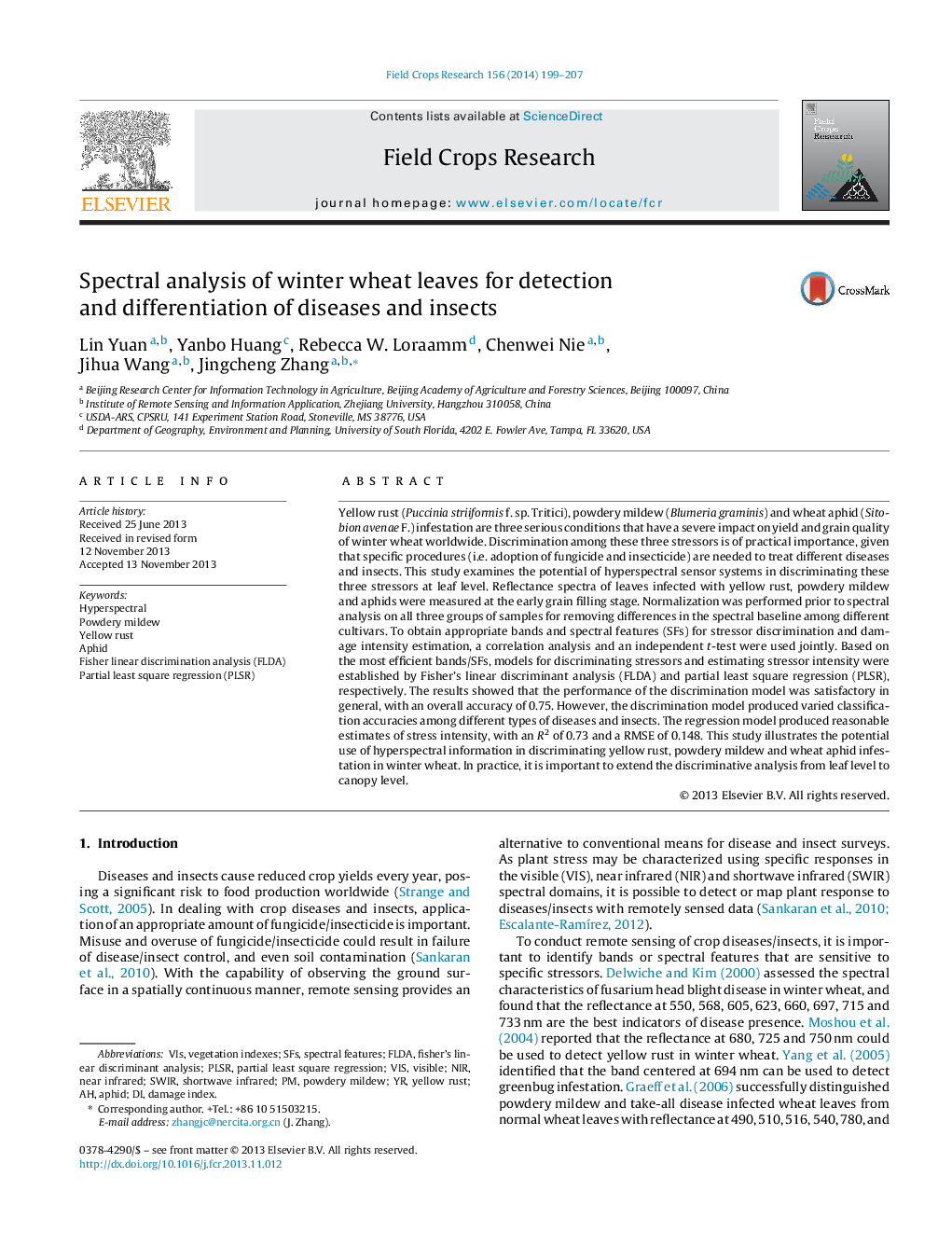| کد مقاله | کد نشریه | سال انتشار | مقاله انگلیسی | نسخه تمام متن |
|---|---|---|---|---|
| 6375127 | 1624707 | 2014 | 9 صفحه PDF | دانلود رایگان |
- The reflectance of yellow rust, powdery mildew and aphid were measured and compared at leaf level.
- Most efficient bands and spectral features were identified for discriminating stressors.
- The overall accuracy of 0.75 was achieved for stressors discrimination by FLDA.
- The damage intensity of diseases/insects was accurately estimated by a PLSR model.
Yellow rust (Puccinia striiformis f. sp. Tritici), powdery mildew (Blumeria graminis) and wheat aphid (Sitobion avenae F.) infestation are three serious conditions that have a severe impact on yield and grain quality of winter wheat worldwide. Discrimination among these three stressors is of practical importance, given that specific procedures (i.e. adoption of fungicide and insecticide) are needed to treat different diseases and insects. This study examines the potential of hyperspectral sensor systems in discriminating these three stressors at leaf level. Reflectance spectra of leaves infected with yellow rust, powdery mildew and aphids were measured at the early grain filling stage. Normalization was performed prior to spectral analysis on all three groups of samples for removing differences in the spectral baseline among different cultivars. To obtain appropriate bands and spectral features (SFs) for stressor discrimination and damage intensity estimation, a correlation analysis and an independent t-test were used jointly. Based on the most efficient bands/SFs, models for discriminating stressors and estimating stressor intensity were established by Fisher's linear discriminant analysis (FLDA) and partial least square regression (PLSR), respectively. The results showed that the performance of the discrimination model was satisfactory in general, with an overall accuracy of 0.75. However, the discrimination model produced varied classification accuracies among different types of diseases and insects. The regression model produced reasonable estimates of stress intensity, with an R2 of 0.73 and a RMSE of 0.148. This study illustrates the potential use of hyperspectral information in discriminating yellow rust, powdery mildew and wheat aphid infestation in winter wheat. In practice, it is important to extend the discriminative analysis from leaf level to canopy level.
Journal: Field Crops Research - Volume 156, 1 February 2014, Pages 199-207
